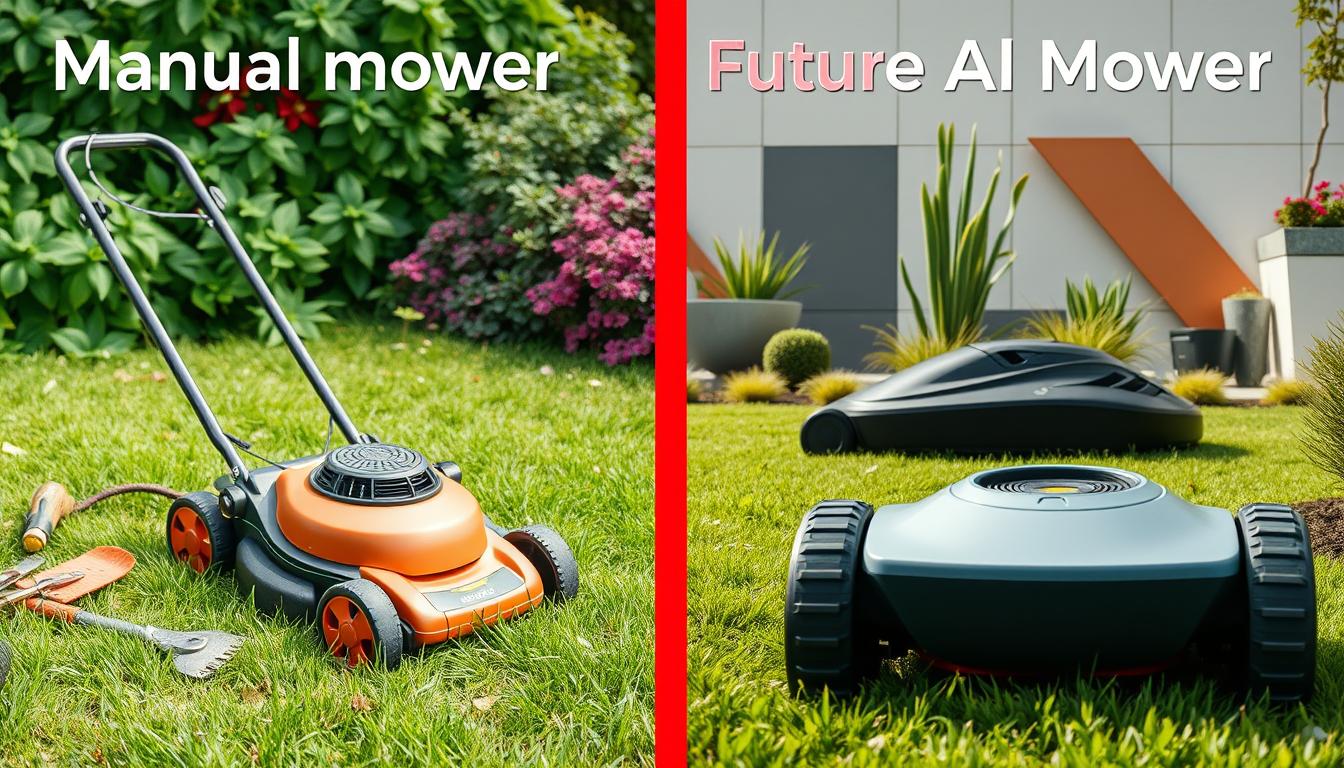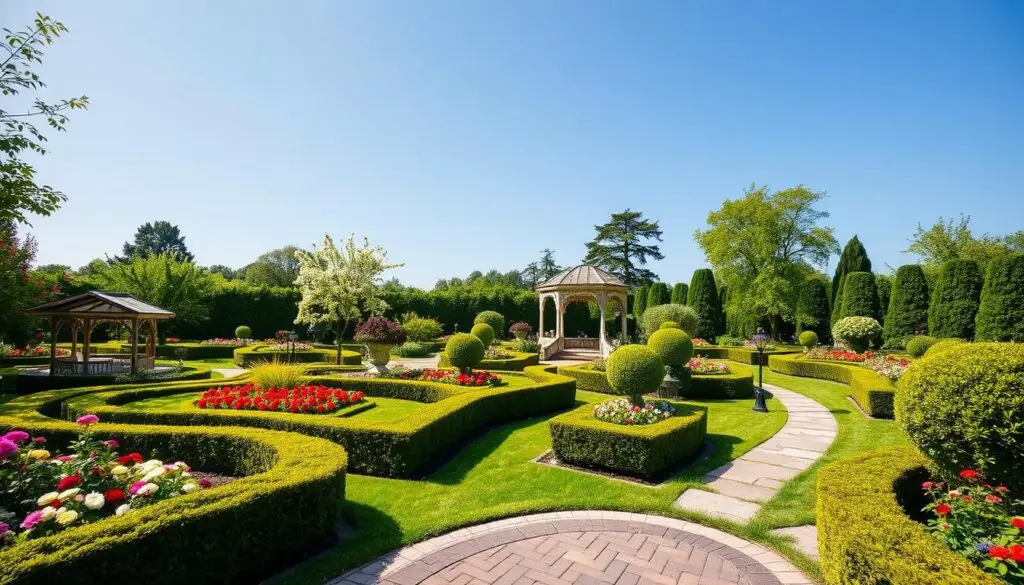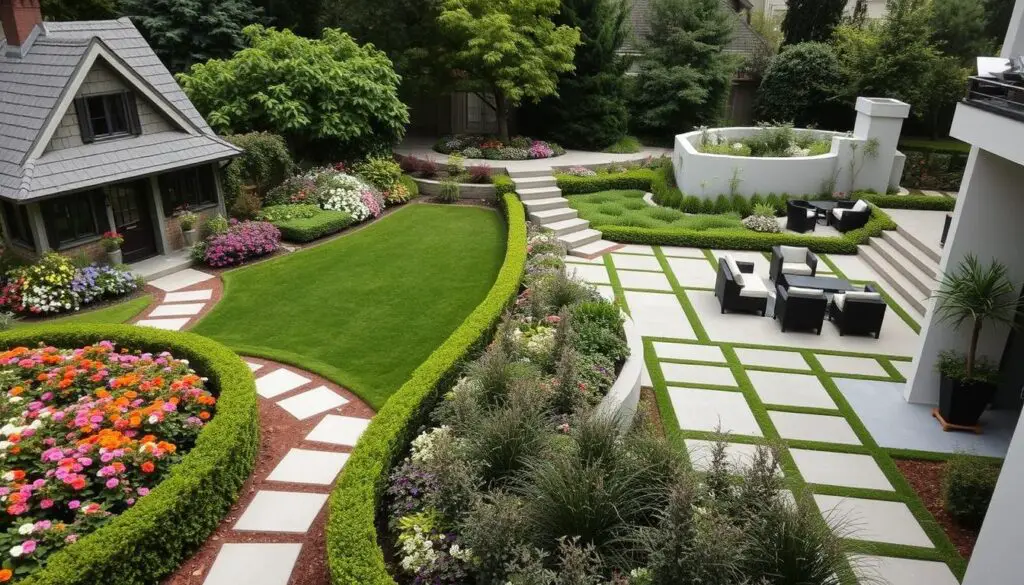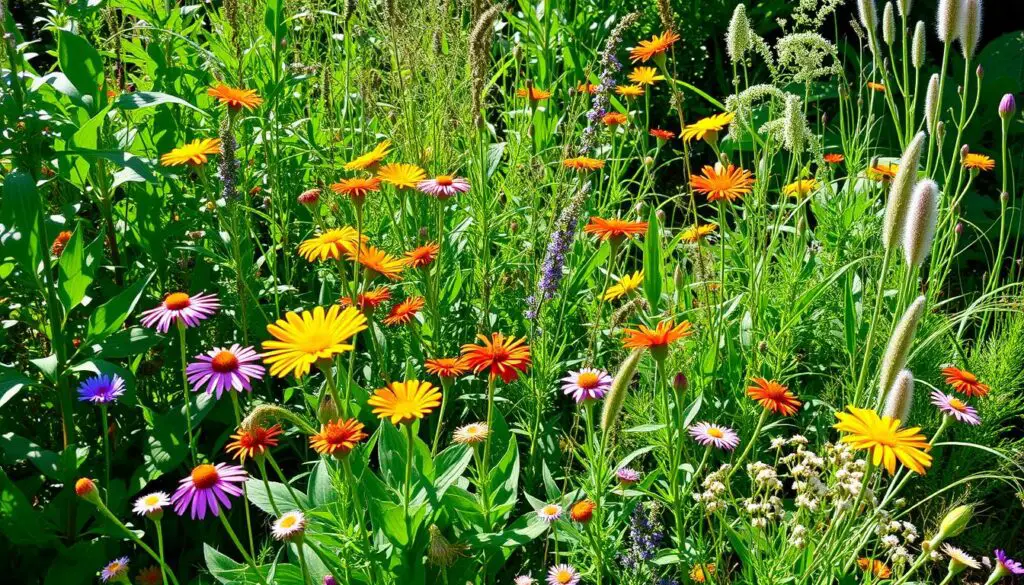Exploring Different Lawn Care Techniques Traditional vs Modern

The landscaping industry in the United States is worth over $153 billion.
As a landscaping professional, I know a big part of this comes from lawn care. A recent poll by Homebase found that 1 in 4 people in the UK love their lawn. But, a shocking 70% of respondents said they don’t know how to care for their lawn.
As the industry grows, we’re seeing a change in lawn care. Old methods used harmful chemicals and lots of energy. Now, we’re moving towards more sustainable, modern ways. From early mowers that made lawns look like bowling greens to today’s eco-friendly options, lawn care is always evolving.
In this article, we’ll dive into the details of traditional and modern lawn care. We’ll help you pick the best method for your clients. Whether you’re experienced or new, knowing the differences can help you stand out in the industry.
Key Takeaways
- The landscaping industry in the US is worth over $153 billion, and lawn care is a significant part of it.
- Traditional lawn care techniques have faced challenges, leading to the need for modernization in the industry.
- Modern lawn care approaches focus on sustainable, eco-friendly practices that reduce environmental impact.
- Clover is a natural alternative to traditional turfgrass, offering benefits like self-fertilization and drought tolerance.
- Incorporating native plants and low-maintenance lawn alternatives can create a more sustainable, functional landscape.
The Significance of Lawn Care in the Landscaping Industry
The landscaping industry in the United States is worth over $153 billion. Lawn care is a key part of this. A poll by Homebase shows that 1 in 4 Americans love their lawn. Yet, 70% don’t know how to properly care for it.
This shows the need for landscaping pros to teach clients about lawn care. They should learn both traditional and modern methods.
The Impact of Lawn Care on Property Values
Well-kept lawns and landscaping can greatly boost a property’s value. Landscaping can increase property values by up to 20%. A well-landscaped home can also have a 5.5% to 12.7% price advantage.
Regular lawn maintenance stops costly problems like pests, diseases, and weeds. This makes the property more attractive to buyers.
| Benefit | Impact |
|---|---|
| Increased Property Value | Up to 20% increase |
| Price Advantage | 5.5% to 12.7% |
| Pest and Disease Prevention | Reduced maintenance costs |
Buyers see a well-kept lawn as a sign of good property care. Lawn care is vital in the landscaping industry. It also helps the environment by catching dust and smoke, and producing oxygen.
“Maintaining healthy lawns prevents erosion and runoff, protecting water bodies.” – Sam Masser, lawn expert
Traditional Landscape Design: Aesthetics and Functionality
Traditional landscape design is a classic way to make outdoor spaces both beautiful and useful. It uses old design rules that mix beauty with function. This creates landscapes that are truly stunning.
Defining Characteristics of Traditional Landscape Design
Traditional landscape design has key features that make it timeless. It often uses symmetrical or proportional layouts to bring order and balance.
Traditional materials like paving stones, gravel, bricks, or wood add to its classic look. Focal points, such as fountains or trees, make the landscape more interesting.
These elements work together to make spaces that are both beautiful and useful. They can greatly improve a property’s value and look. By using traditional design, you can make outdoor areas that are lovely and practical.
“Utilizing a traditional style theme in landscape design can provide a sense of timelessness and established design principles that have endured over time.” – Laura, lawn health expert
Traditional landscape design started in France and England’s grand courtyards in the 18th century. It’s still loved for homes with European-influenced architecture. Its symmetrical design and neat hardscapes create a formal, timeless look that’s both striking and practical.

Traditional landscape design combines old elements for a beautiful outdoor experience. It fits many architectural styles and personal tastes. Whether you like French gardens or English landscapes, traditional design is a great base for amazing outdoor spaces.
Modern Landscape Design: Sustainability and Functionality
Modern landscape design is changing the game, focusing on sustainability and function. It uses low-maintenance, native plants that don’t need much water or chemicals. The design features clean lines and asymmetry, making outdoor spaces both beautiful and practical.
Modern design also includes functional outdoor areas like patios and kitchens. These features make the landscape an extension of the home. They offer spaces for relaxation, entertainment, and dining.
Sustainability is key in modern design. Native plants save water and protect local ecosystems. Designers also avoid harmful chemicals and fossil fuels, making spaces eco-friendly.
Modern design is known for its simplicity and clean lines. A neutral color palette and geometric patterns bring order and calm. Sculptural plants add depth and interest, enhancing the modern look.
Modern landscape design combines function, sustainability, and beauty. It changes how we live outdoors, making our surroundings more beautiful and eco-friendly.
Blending Traditional and Modern Landscape Styles
More people are mixing traditional and modern landscape styles. They want their outdoor spaces to look good and work well. Using native plants that need less care is a smart move. It makes the space look interesting and helps the environment. AI design tools can also help mix old and new styles, making the space look great.
Working with experts, like outdoor living contractors, is also key. They know how to pick the right plants and materials. This ensures your space looks good and works well.
Embracing Sustainable and Innovative Landscape Design
Combining old and new in your garden makes it beautiful and green. Using plants that don’t need much water is a good idea. It saves water and looks nice. AI can also help you see new ways to mix styles, making your garden unique.
| Landscape Design Style | Key Characteristics |
|---|---|
| Traditional | Formal layouts, classic materials, and focal points like fountains or statues |
| Modern | Clean lines, simplicity, and functionality, with the use of natural materials like wood, stone, and metal |
| Blended | A harmonious combination of traditional and modern elements, incorporating sustainable plants and innovative design techniques |
By mixing traditional and modern, you get a garden that’s beautiful, green, and useful. This way of designing gardens is getting more popular. People want their gardens to be both pretty and good for the planet.

“The key to a successful blended landscape design is to strike the right balance between traditional and modern elements, while always prioritizing sustainability and functionality.” – Sam, author of the Mower’s Guide
Lawn Care Techniques: Traditional vs. Modern Approaches
Lawn care has changed a lot over time. Old ways focused on a perfect, uniform look. This meant mowing often, using chemicals, and pesticides. Now, we’re moving towards greener, more eco-friendly methods.
Back then, a lush, green lawn was the goal. People mowed their lawns weekly to keep them looking neat. They used synthetic fertilizers and pesticides, which harmed the environment.
Today, we’re going for sustainable lawn care. We use native grasses that need less water and care. We mow less and avoid harsh chemicals. Lawn care experts now focus on biodiversity, like growing wildflowers and helping pollinators.
Landscapers need to know what their clients want. They aim for a mix of old-school looks and new, green ways. This way, they make landscapes that look good and are good for the planet.
Trends in Lawn Care Techniques
- Reduced mowing frequency to support healthier grass growth
- Increased use of native, low-maintenance grass species
- Minimizing the use of synthetic fertilizers and pesticides
- Encouraging wildlife-friendly practices, such as allowing wildflowers to thrive
- Adoption of smart technologies, like robotic lawn mowers and automated irrigation systems, for more efficient lawn care
The lawn care world is always changing. Finding the right mix of old and new is key. It helps landscapers meet client needs while caring for the planet.
“Sustainable lawn care is not only better for the environment, but it can also save homeowners time and money in the long run.” – Sam, mower specialist
Researching and Integrating Native Plants
Using native, low-maintenance plants is key for both traditional and modern landscape design. These plants fit well with the local climate and need less water, fertilizer, and upkeep. They’re great for eco-friendly landscaping and can also fit into more formal designs.
The Value of Native, Low-Maintenance Plants
More homeowners in Loganville, GA are using native plants in their designs. These plants are made for Georgia’s weather, so they need less care. They use less water, fertilizer, and upkeep than other plants, helping the environment.
Native plants also help local wildlife by offering a home for pollinators and other helpful animals. It’s important to check the site before picking native plants to make sure they grow well. Think about their growth, size, and how they look at different times of the year.
Buying native plants from good nurseries or special places is best for their health. To care for them, water at the right times to cut down on evaporation and use mulch to keep the soil moist. Gardens with native plants can attract bees, butterflies, and hummingbirds.
| Native Plants | Non-Native Plants |
|---|---|
| Require less water, fertilization, and maintenance | Require more water, fertilization, and maintenance |
| Support local wildlife and pollinators | Do not provide the same ecological benefits |
| Contribute to sustainable landscape design | May not be as environmentally friendly |

“Incorporating a diverse array of native plants, including trees, shrubs, perennials, and grasses, creates visual appeal and ecological robustness.” – Sam, author
Working with skilled landscape pros can help pick and design with native plants. It’s important to think about how native plants will grow over time to keep the landscape looking good. Taking care of native plants, like pruning and watering, is key to their health and lasting beauty.
Staying Ahead of Trends and Embracing Innovation
To succeed in the changing landscape design world, staying updated is key. Professionals should learn about new trends and use innovative methods. This means using green landscaping, AI design tools, and working with experts to add the latest features to designs.
The lawn care industry is moving towards eco-friendly and tech-smart solutions. Researching competitors helps you stay ahead. Using digital marketing, like social media and SEO, can also help you reach more people and show your skills.
Techniques like xeriscaping can cut water use by 50-75%. This is great for those who care about the environment. By knowing what customers want, you can offer services that fit their needs perfectly.
“92% of homeowners are seeking more sustainable solutions for their homes, and 62% of businesses have made eco-friendly improvements to their operations.” – Arnold, Owner of Arnie’s Landscaping
Using Lawn Care Management Software and IoT devices can make your work more efficient. Investing in your team’s training ensures they can provide top-notch service. As the industry grows, finding new ways to grow your business is important.

By keeping up with trends and using new methods, landscapers can lead the industry. They can offer solutions that meet the changing needs of homeowners. Success comes from always being ready to adapt and innovate.
Seeking Inspiration from Local Gardens and Parks
As a landscaping pro, I find visiting local gardens and parks very helpful. They show off a mix of traditional and modern designs. You can see everything from formal layouts to the use of native plants and outdoor living areas.
By looking at these spaces, I get ideas for my clients’ yards. I see how parks mix different styles and how gardens use space in creative ways. These places are full of inspiration for beautiful and useful outdoor spaces.
Exploring these areas keeps me current with design trends. It helps me offer new ideas that improve both looks and function of outdoor spaces. This way, I can meet my clients’ needs and make their yards better.

